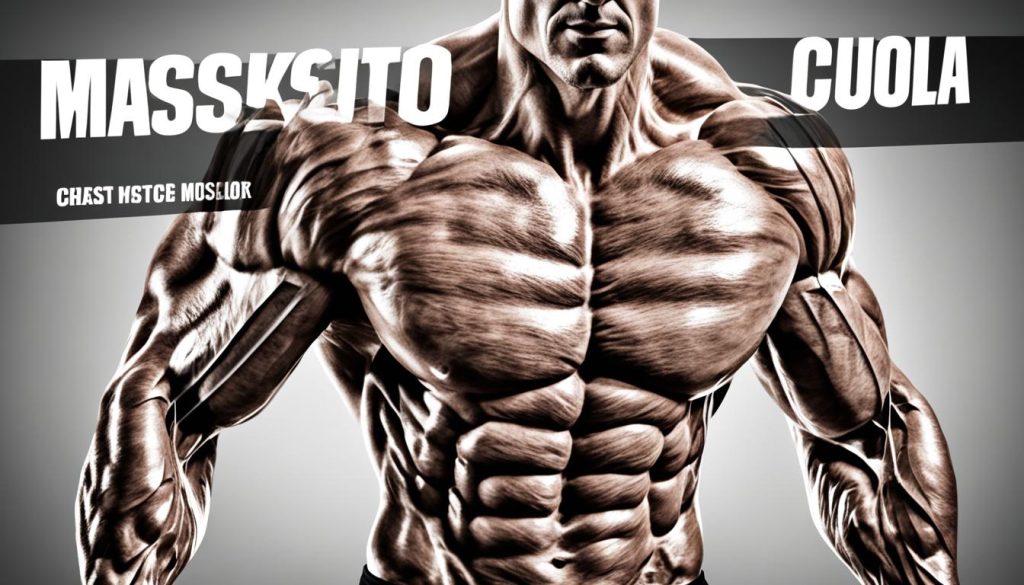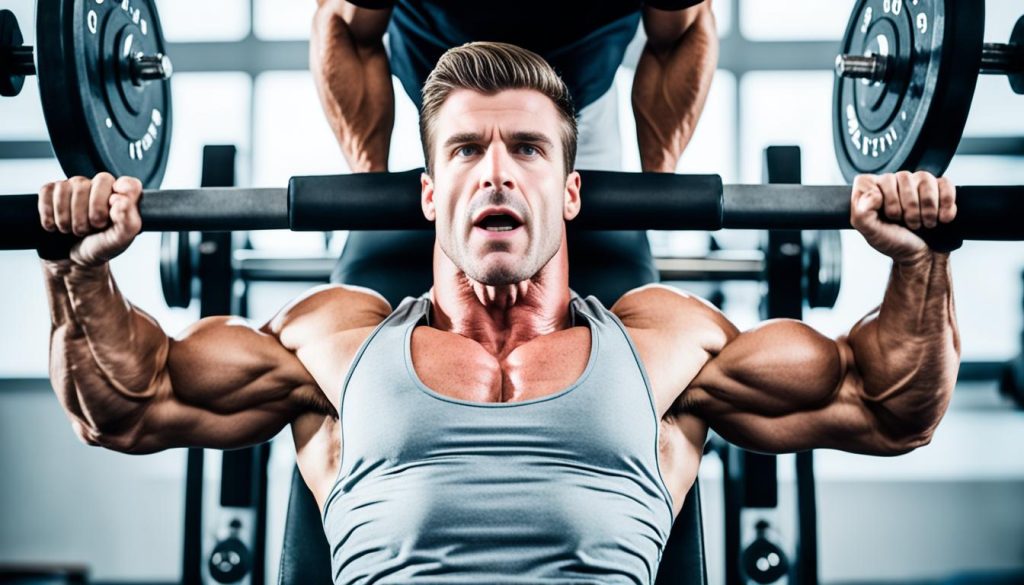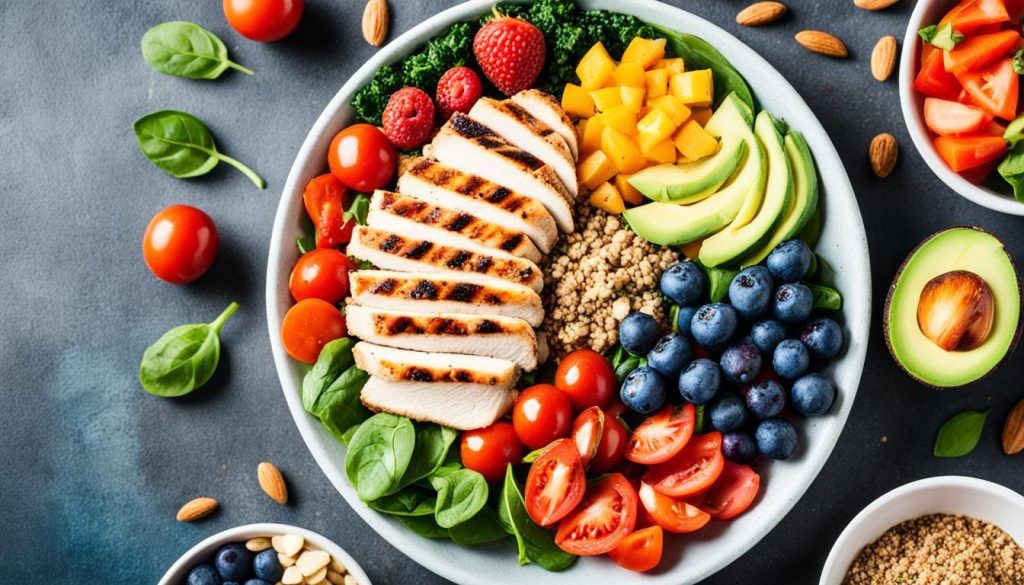To achieve a bigger chest and develop strong, well-defined pectoral muscles, it is important to follow a targeted chest workout routine. By incorporating a variety of chest exercises and focusing on proper form, you can effectively build chest muscle and enhance your chest size. Whether you’re looking to develop a bigger chest or increase your chest strength, this article will provide you with valuable tips and chest training tips to help you reach your goals.
Your Major Chest Muscles, Explained
Understanding the anatomy of your chest muscles is crucial for targeted and effective training. The chest is composed of several major muscles, including the pectoralis major, pectoralis minor, and serratus anterior.
The pectoralis major is the largest muscle in the chest, making up most of the chest muscle mass. It is responsible for movements such as flexion, adduction, and internal rotation of the humerus. Targeting the pectoralis major through exercises like bench press, dumbbell press, and chest flyes can help develop and strengthen this muscle.
The pectoralis minor is situated beneath the pectoralis major. Although smaller in size, it plays an important role in stabilizing the scapula and assisting in deep inhalation. Strengthening exercises for the pectoralis minor often involve movements like push-ups and dips that engage both the pectoralis major and minor.
Another significant muscle of the chest is the serratus anterior, which is situated along the side of the chest wall. It helps to protract and stabilize the scapula, allowing for more efficient movements during upper body exercises. Strengthening the serratus anterior can be achieved through exercises such as serratus push-ups and straight-arm pulldowns.
| Chest Muscle | Main Function | Targeted Exercises |
|---|---|---|
| Pectoralis Major | Flexion, adduction, internal rotation of humerus | Bench Press, Dumbbell Press, Chest Flyes |
| Pectoralis Minor | Stabilization of scapula, assisting in deep inhalation | Push-Ups, Dips |
| Serratus Anterior | Protraction and stabilization of scapula | Serratus Push-Ups, Straight-Arm Pulldowns |
By understanding the major chest muscles and targeting them through specific exercises, you can effectively develop a strong and well-defined chest. It is important to incorporate a variety of movements that engage these muscles to ensure overall chest development and strength.

Why Isn’t My Chest Growing?
If you’re frustrated with the lack of chest growth despite your efforts, there could be several reasons behind it. It’s crucial to identify and address these factors to unlock your chest growth potential. Here are some common reasons for a lack of chest growth and how to overcome them:
1. Incorrect Form
One of the primary reasons for stagnant chest growth is improper form during exercises. If your form is incorrect, you may not effectively target your chest muscles, limiting their growth potential. Focus on maintaining proper form throughout each exercise, with emphasis on your chest muscles. This means ensuring a full range of motion, engaging the chest muscles, and avoiding excessive recruitment of other muscle groups.
2. Ineffective Warm-Up
A proper warm-up is essential for preparing your chest muscles for an intense workout. Without a thorough warm-up, you risk reduced muscle activation and potential injury. Incorporate dynamic warm-up exercises that focus on opening up the chest, increasing blood flow to the area, and activating the chest muscles. This will create an optimal environment for chest muscle growth.
3. Lack of Muscle-Building Stimulus
The key to muscle growth is providing the necessary stimulus. If you’re not challenging your chest muscles enough, they won’t adapt and grow. Incorporate slow, controlled lifts that bring your muscles to fatigue. This ensures that you’re not simply going through the motions, but actively stimulating muscle growth. Progressive overload, where you gradually increase the weight or intensity of your workouts, is also crucial for continued chest growth.
4. High-Load Dynamic Warm-Ups
High-load dynamic warm-ups have been shown to enhance power and strength performance. By incorporating exercises with heavier loads and explosive movements, such as medicine ball throws or kettlebell swings, you create an optimal pre-workout environment for muscle growth. These exercises activate the nervous system and prime your chest muscles for the intense work to follow.
By addressing these factors and making appropriate adjustments to your training regimen, you can overcome the plateau and finally achieve the chest growth you desire. Remember, consistency and dedication to proper form, warm-up, and muscle-building stimulus are key to maximizing your chest growth potential.

How to Get a Big Chest?
When aiming to activate your chest muscles during a workout, incorporating specific exercises and techniques can make a significant difference in targeting and engaging the chest. To maximize your chest muscle activation and improve overall chest development, consider the following:
Mobility Exercises
Prior to starting your chest workout, performing mobility exercises can help open up the chest and enhance range of motion. Incorporate exercises such as arm circles, shoulder dislocations, and wall slides to improve the flexibility and mobility of the shoulder joints, effectively preparing your chest muscles for the workout ahead.
Dynamic Warm-Ups
A dynamic warm-up routine is essential to activate your chest muscles. By performing dynamic movements that mimic the exercises you’ll be doing, you can effectively prime your chest muscles for lifting. Examples of dynamic warm-up exercises include chest openers, bodyweight push-ups, and shoulder rotations with resistance bands. This helps increase blood flow to the chest muscles and prepares them for the upcoming workload.
Back-Strengthening Movements
Strengthening the back muscles is crucial for optimizing chest muscle activation. The back muscles act as stabilizers during chest exercises, allowing for greater power and control. Incorporate exercises such as rows, pull-ups, and lat pull-downs to strengthen your upper back and improve your mind-muscle connection with your chest muscles.
Mind-Muscle Connection
Developing a strong mind-muscle connection is key to ensuring effective activation of the chest muscles. During your chest workout, focus on visualizing the movement as a pulling motion, where you bring your arms together rather than just pushing the weight. This mental cue can enhance the activation of your chest muscles, leading to better results and improved overall chest development.
By incorporating mobility exercises, dynamic warm-ups, back-strengthening movements, and mind-muscle connection techniques, you can optimize chest muscle activation and take your chest workouts to the next level. Remember to listen to your body, maintain proper form, and gradually increase the intensity as your strength and technique improve.
What to Eat for a Bigger Chest?
Proper nutrition is crucial for promoting muscle growth and development, including the chest muscles. When it comes to nutrition for muscle growth, two key components to consider are protein intake and carbohydrates.
Protein is essential for supporting muscle repair and growth. Current dietary guidelines suggest consuming 0.8g of protein per kg of bodyweight per day. However, for those looking to build muscle, it is recommended to increase protein intake to around 1.6 to 2.0g per kg of bodyweight. Including a variety of protein sources such as lean meats, poultry, fish, boiled eggs, dairy, and plant-based proteins like tofu and legumes can help meet your protein needs while promoting chest muscle growth.
Carbohydrates play a vital role in fueling workouts and replenishing glycogen stores. When consumed in the right amounts, carbohydrates provide the energy necessary for high-intensity exercises that stimulate muscle growth. Opt for complex carbohydrates like whole grains, fruits, vegetables, and legumes, which provide sustained energy and important nutrients[^3^].
Counting macros can be a valuable tool to ensure you’re meeting your nutritional goals. By tracking your protein, carbohydrates, and fats, you can fine-tune your diet to support muscle growth and optimize your overall health.
| Protein Sources | Carbohydrate Sources |
|---|---|
| Chicken breast | Brown rice |
| Salmon | Sweet potatoes |
| Greek yogurt | Oats |
| Eggs | Quinoa |
| Tofu | Whole wheat bread |
Remember, maintaining a healthy and balanced diet that supports lean body mass is crucial for achieving a bigger chest. Alongside a well-designed workout routine, proper nutrition is the key to maximizing your chest muscle growth potential.

Conclusion
Building a big chest requires consistent effort and a combination of optimal training techniques and proper nutrition. By incorporating a variety of exercises into a targeted chest workout routine, you can effectively stimulate chest muscle growth and achieve a bigger chest.
It is essential to focus on proper form during exercises to ensure maximum muscle activation and prevent injury. Additionally, activating your chest muscles through mobility exercises and dynamic warm-ups can further enhance your chest muscle growth.
Nutrition plays a crucial role in supporting muscle growth, including chest muscles. To fuel your chest workouts and promote muscle growth, it is important to maintain a well-rounded diet that includes an adequate amount of protein and carbohydrates.
Remember, achieving a bigger chest requires consistent effort and dedication. Stay committed to your training routine, prioritize proper nutrition, and give your muscles the time they need to recover. With perseverance and the right strategies, you can build a big and strong chest.
FAQs
What are some effective chest exercises?
Effective chest exercises include bench press, dumbbell press, push-ups, incline press, decline press, chest flyes, and dips. These exercises target different areas of your chest and can be performed with various equipment or just bodyweight. Incorporating a combination of these exercises into your chest workout routine can help you build a bigger chest.
How often should I train my chest?
The frequency of training your chest depends on several factors, including your training experience, recovery ability, and overall workout program. However, a general recommendation is to train your chest 1-2 times per week with rest days in between. This allows for adequate recovery and muscle growth.
Can I build a big chest without equipment?
Yes, you can build a big chest without equipment by performing bodyweight exercises such as push-ups, dips, and variations of push-up exercises. These exercises effectively target your chest muscles and can be done at home or anywhere without the need for equipment.
How long does it take to get a big chest?
The time it takes to get a big chest varies from person to person and depends on various factors such as genetics, training consistency, intensity, and nutrition. Building muscle takes time and dedication, so it is important to stay consistent with your workouts and maintain a proper diet for muscle growth. With consistent effort, you can start seeing noticeable changes in your chest size within a few months.
Is the bench press the best exercise for a bigger chest?
The bench press is one of the most effective exercises for building a bigger chest. It targets the pectoralis major, the largest muscle in the chest. However, to fully develop your chest muscles, it is important to incorporate a variety of exercises that target different areas of the chest. This includes exercises like dumbbell press, push-ups, incline press, decline press, chest flyes, and dips.

